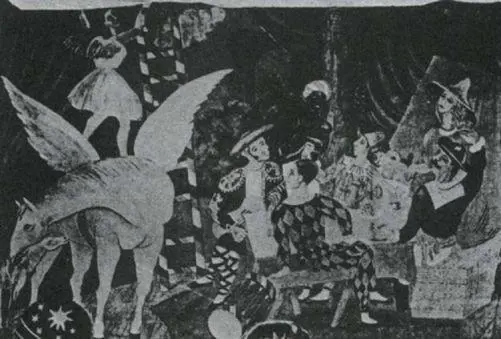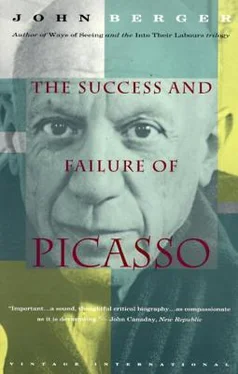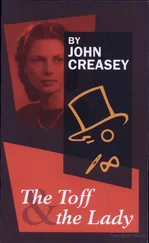It was not simply a question of dispersal. After the war most of the Cubists came back to Paris. Yet it was quite impossible for them to find or re-create the spirit and atmosphere of 1910. Not only was the whole aspect of the world different, not only had disillusion taken the place of hope, but their own position relative to the world had altered. Up to 1914 they had been ahead of events and their work prophetic. After the war events were ahead of them. Reality outstripped them. They no longer sensed — even intuitively — the drift of what was happening. The age of essential politics had begun. What was revolutionary was now inevitably political. The great innovator, the great revolutionary artist of the 1920s was Eisenstein. (James Joyce belonged essentially to the pre-war world.) Some of the Cubists, such as Léger, and some of their followers, like Le Corbusier, acquired a political view and moved forward to become a new avant-garde. Others retreated. Max Jacob for example, once sceptical and heretical, became a baptized Catholic in 1915 and went to live in a monastery.
Nothing illustrates this change more vividly than the story of the ballet Parade. The Cubists had always despised the ballet as a pretentious and bourgeois form of entertainment. They preferred fairgrounds and the circus. In 1917, however, Jean Cocteau persuaded Picasso to collaborate with him and the composer Erik Satie in the creation of a ballet for Diaghilev. Diaghilev’s company had been fashionable in Paris for ten years. In Russia it was a favourite of the Tsar. But Cocteau’s plan was to break with tradition and produce a ‘modern’ spectacle. The title Parade was meant to suggest the circus and music-hall, and so exorcize the bourgeois ghosts.
Picasso went to Rome to work on the ballet. He designed the drop-curtain, the costumes, and the scenery. He also contributed ideas and suggestions. The drop-curtain is sentimental, perhaps deliberately so. But it fits the new milieu in which Picasso now found himself.

45 Picasso. Curtain for Parade. 1917
We made Parade [wrote Cocteau] in a cellar in Rome where the troupe rehearsed, we walked by moonlight with the dancers, we visited Naples and Pompeii. We got to know the gay futurists.
It is a long way from the violence of the Demoiselles d’Avignon , a long way from the austerity of the Cubist still-lifes, and a very long way from the Western Front in the third year of the World War.
The ballet itself was less conventional. And it might be argued that the drop-curtain was deliberately designed to lull the audience. There were seven characters in the ballet: a Chinese conjurer, an American girl, two acrobats, and three stage-managers. These last wore constructions made up of ‘Cubist’ elements which made them ten feet tall. One of them was French and ‘wore’ the trees of the boulevards, another was American and ‘wore’ skyscrapers, and the third was a horse. They moved about the stage like moving scenery and their purpose was to dwarf the dancers, so that these looked like puppets.
There was no coherent story but a lot of mimicry. Here are two of Cocteau’s typical directions for the dancers. For the Chinese conjuror:
He takes an egg out of his pigtail, eats it, finds it again on the end of his shoe, spits out fire, burns himself, stamps on the sparks, etc.
For the American girl:
She runs a race, rides a bicycle, quivers like the early movies, imitates Charlie Chaplin, chases a thief with a revolver, boxes, dances a ragtime, goes to sleep, gets shipwrecked, rolls on the grass on an April morning, takes a snapshot, etc.
The ballet opened on 17 May at the Théâtre du Châtelet in Paris. The highly distinguished audience was outraged and suspected that the ballet had been designed to make them look ridiculous. As the curtain went down, there were threats to attack the producer, and cries of ‘ Sales Boches! ’ Apollinaire saved the situation. Wounded, with a bandage round his head, in uniform, and wearing the Croix de Guerre, he was able to appeal, as a patriotic hero, for tolerance.
He had also written the Introduction to the programme. In this he was enthusiastic and said that the ballet was a proof that the modern movement, the new spirit in the arts, could survive the war. To the surviving spirit he gave the name super-realism or surrealism.
In eighteen months Apollinaire would be dead. (He died as Paris celebrated the armistice, and when, in his fever, he heard the crowds shouting that Kaiser William should be hanged, he thought, since his name was William, that they meant him.) Yet he had already named the next phase of the modern movement.
We do not know what Apollinaire would have thought later. I think he would have soon recognized that ‘the new spirit’ was not a simple continuation of that of the Cubists. The latter were prophets — whose prophecies, still to some extent unfulfilled, remain convincing. The Surrealists were wry commentators on a reality that was already outbidding them.
Exactly one month and one day before Parade opened in Paris, the French had begun their offensive against the Hindenburg line. Their objective was the river Aisne. The attack was a total disaster. The number of casualties was kept secret, but it is estimated that 120,000 Frenchmen were killed. This was happening about 150 miles away from the Théâtre du Châtelet. Utterly disillusioned and partly prompted by the example of the Russian Revolution of February, large sections of the French army were mutinying when the ballet opened. Once again the figures have been kept secret. But, without doubt, it was the most serious mutiny in a great army in modern history. There were many strange incidents. Everything had lost its reason. One small incident has since become famous. A contingent of infantrymen marched through the streets of a town. As they marched in proper order, they baa-ed like sheep to indicate that they were lambs being absurdly led to the slaughter.
Does not the grotesque absurdity of this scene which was actually happening make Cocteau’s and Picasso’s American girl seem unstartling and commonplace?
We must try to be very clear about the significance of this — for there, in the Théâtre du Châtelet in 1917, was posed one of the recurring problems of art in our time.
Events in our century occur on a global scale. And the area of our knowledge has widened in order to encompass these events. Every day we can be aware of life-and-death issues affecting millions of people. Most of us close our minds to such thoughts except in times of crisis or war. Artists, whose imaginations are less controllable than most, have been obsessed with the problem: How can I justify what I am doing at such a time? This has led some to renounce the world, others to become over-ambitious or pretentious, yet others to stifle their imaginations. But since 1914 there cannot have been a serious artist who has not asked himself the question.
It would take a whole book to examine this dilemma fully. I want to make just one point in order to show why it is relevant to mention the Battle of the Aisne whilst discussing Parade. In 1917, Juan Gris was continuing to paint Cubist pictures — his best and some of the most advanced Cubist pictures ever painted. (Because he was the most intellectual of the Cubists, Gris was the only one who, for a few years, could continue after Cubism as a movement had died. He could see the theoretical problems still to be solved, and he set out to solve them with all his intelligence.) These paintings are as far from the war as Parade — in fact farther. Yet why is it here irrelevant to mention the eight million dead — or as irrelevant as it can ever be?
Читать дальше













